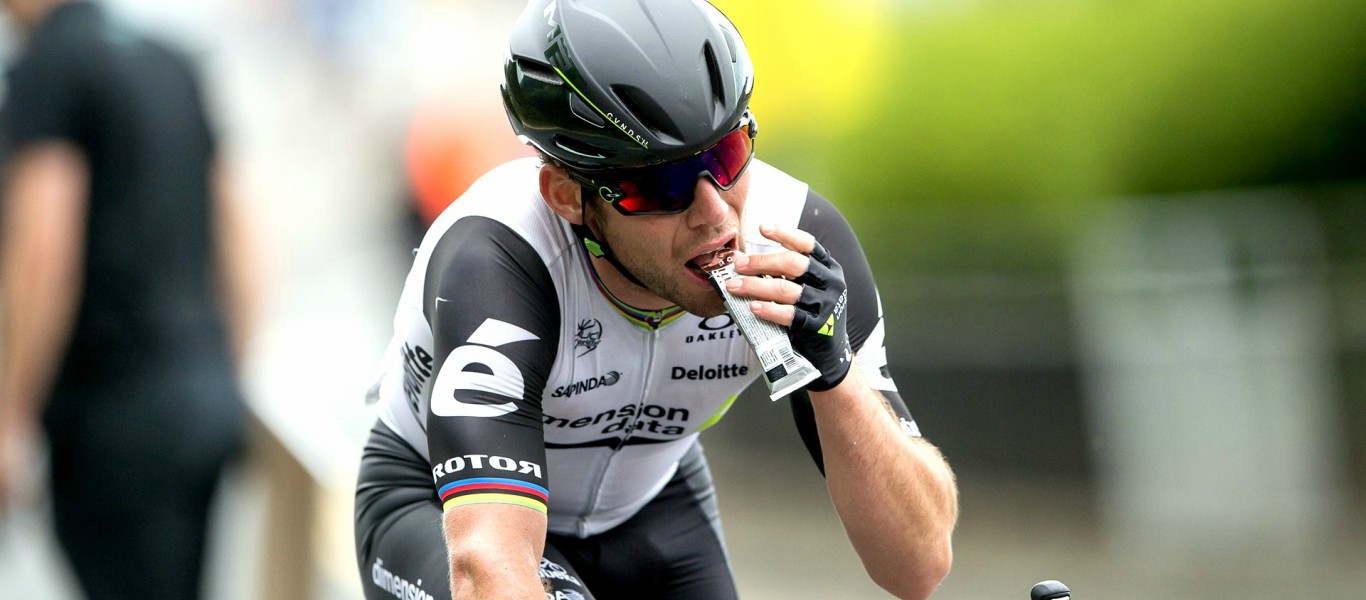Every day during the Tour De France, riders burn about 5000–8000 kcal depending on the stage difficulty. That’s about 2-3x more than the average cyclist would burn in a day. For example, a 70kg (155lb) rider could eat as much as the equivalent of 55 bananas in one day to get enough carbs. Of course, bananas are not the only food they eat. Let’s check out what foods they actually eat and why.
09:00 start with a large breakfast
Riders need to recover from the previous day as well as fuel for the upcoming stage so their breakfast is usually pretty big. They need to ingest a lot of slow carbs, quality protein, some healthy fats but nothing too heavy. This is an example of just one rider’s first meal of the day:
A bowl of oatmeal with nuts, a large omelette, three sandwiches with cheese and ham, 100g of pasta, 1 cup of yoghurt, 500ml fruit smoothie, 1 glass of apple juice, 1 coffee.
10:30 continue with a pre-race snack
Since the stage starts at 12:00 riders have a chance to get some more fuel in on the bus while driving to the starting line.
This snack usually involves a piece of fruit, a couple of energy bars, a lot of water, and, of course, another coffee.
12:00 – 17:00 fuel on the bike
The trend is to eat as much as possible before a stage to limit the amount of food consumed on the bike. This makes sense because food in your stomach can slow riders down and sometimes even cause gastric problems. Race fuelling also depends on the stage type. Flat stages where riders spend a lot of time inside the peloton don’t require much added carbs as riders can burn enough fat for energy at medium intensities. It’s the demanding hilly stages that require a fair amount of food. Riders usually consume a mix of real foods and gels to hit roughly 60-90g of carbs per hour. This is what a hard stage might look like.
Two rice cakes, a croissant with jam and ham, 6 energy bars, 2 isotonic gels, 2 cans of coke, 6 bidons of electrolyte drinks.
17:00 start your recovery
Recovery starts the moment a rider gets off their bike. Usually, they get a recovery drink from their Soigneurs as soon as they finish a stage and they continue to eat on the bus. The key is to deliver a lot of carbs to replenish their glycogen stores and a sufficient protein so that muscles start rebuilding. This is an example of what a rider might consume in the first hour or two after a stage.
A recovery drink, a chicken sandwich, a rice cake, 500ml fruit and vegetable smoothie, 2 coffees.
20:00 have a big evening meal
The evening time is when riders have a lot of colourful veggies and heavier protein foods to cover their nutritional bases because these are slow to digest and there’s no time for that during the race day. This is what a race day dinner might look like.
A large beefsteak, 150g pasta, 1 cup of yoghurt, 500ml vegetable juice or a big salad, 2 coffees.
23:00 finish the day with an evening snack
The rider’s body continues to burn a lot of calories hours after the stage ended. That’s why riders have to keep fuelling even in the late evening. The focus is on easy-to-digest carbohydrate-rich foods to keep the glycogen reserves topped up. These are popular choices.
A cup of yoghurt with cereals, a handful of nuts, a piece of fruit.
Do you think you can eat all of that in one day? And how about if you had to ride 200 km through the Alps while doing it?






